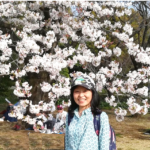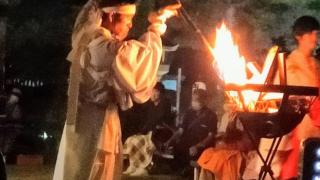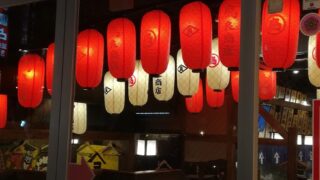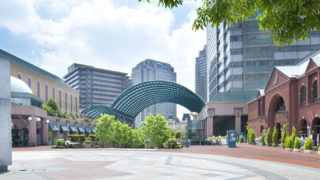Explore ASUKA, Nara | Ancient Capital
Contents
Asuka
Asuka is the name of period (593-622) when Japan’s central government was located here and Prince Shotoku governed the nation around 1400 yrs ago.
Asuka is also the name of location of its governmental buildings.
The present Asuka is calm village quite spread out with terraced fields and surrounded by mountains.
Remaining oldest temple & Buddhist statue, many tumulus and ancient monuments show Asuka’s prosperity at that time.
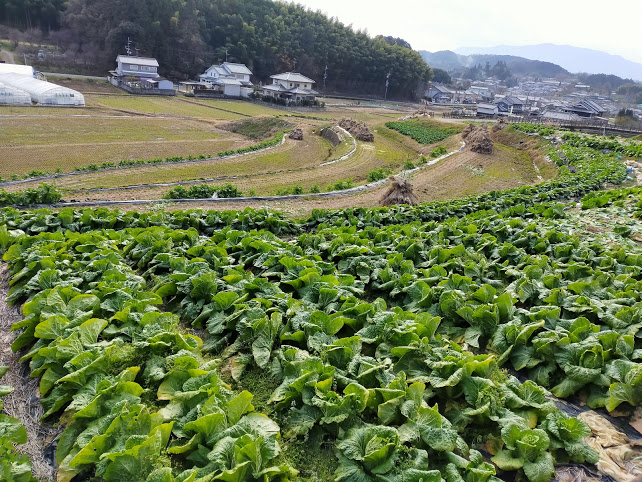
Asuka village
How to explore Asuka village
Asuka village is spacious and hillside field surrounded by mountains.
Bicycle, especially electric bicycle is the best option to explore in this area.
Located near Kashihara Jingu shrine sta., Asuka Rental Cycling rents bicycle of various size and electric bicycle.
Rent a bicycle of your appropriate size and go for exploration.
URL : http://www.k-asuka.com/english/index.html
Don’t forget English cycling map
Kashihara Jingu Shrine
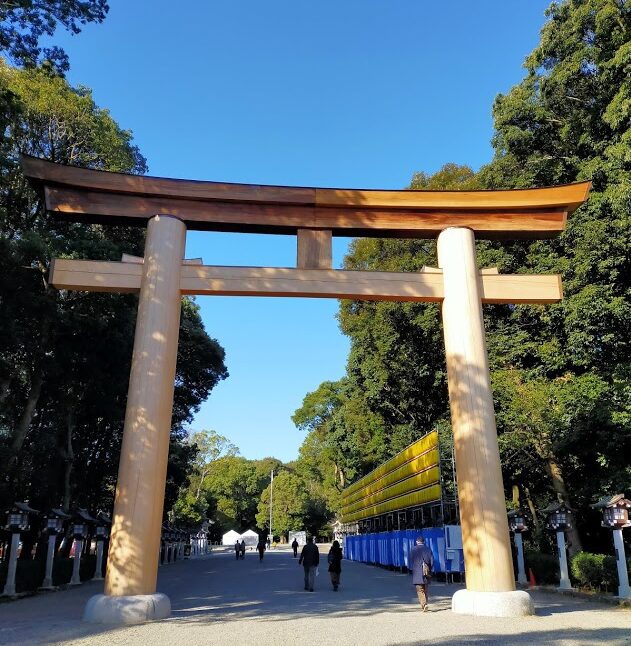
Kashihara Jingu
Around 10min walk from Kashihara Jingu Station, Kashihara Jingu Shrine stands with Mt. Unebi at the back.
Built in 1890 based on description of Nihon Shoki, Chronicles of Japan, Kashihara Jingu enshrines Japan’s first Emperor Jimmu.
Main hall is designated as Important Cultural Asset.
Before you rent a cycle, why don’t you visit Kashihara Jingu shrine to pray for today’s safe trip?
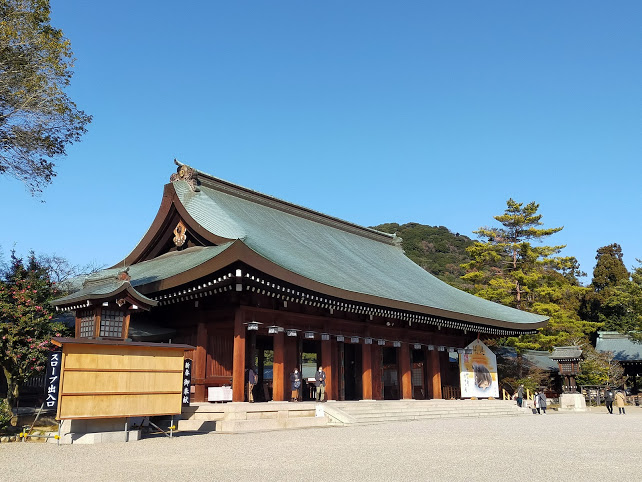
Kashihara shrine, ASUKA
Amakashi no oka Hill
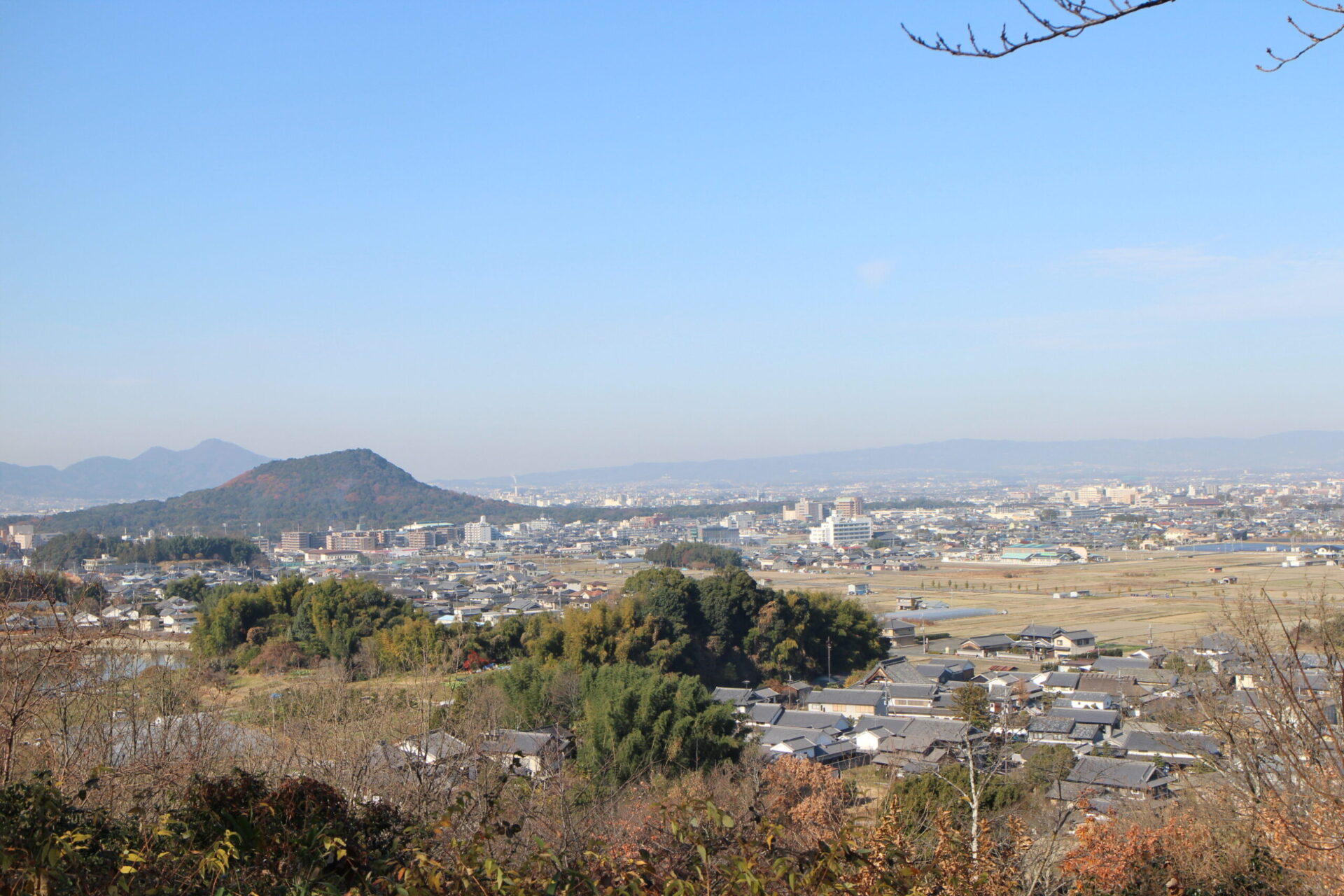
Amakashi no oka
148m high hill top used to be the residential area of Soga family with formidable power in Asuka period, from where beautiful scenery of Yamato three mountains and Asuka village can be viewed.
Asukaniimasu Jinja Shrine
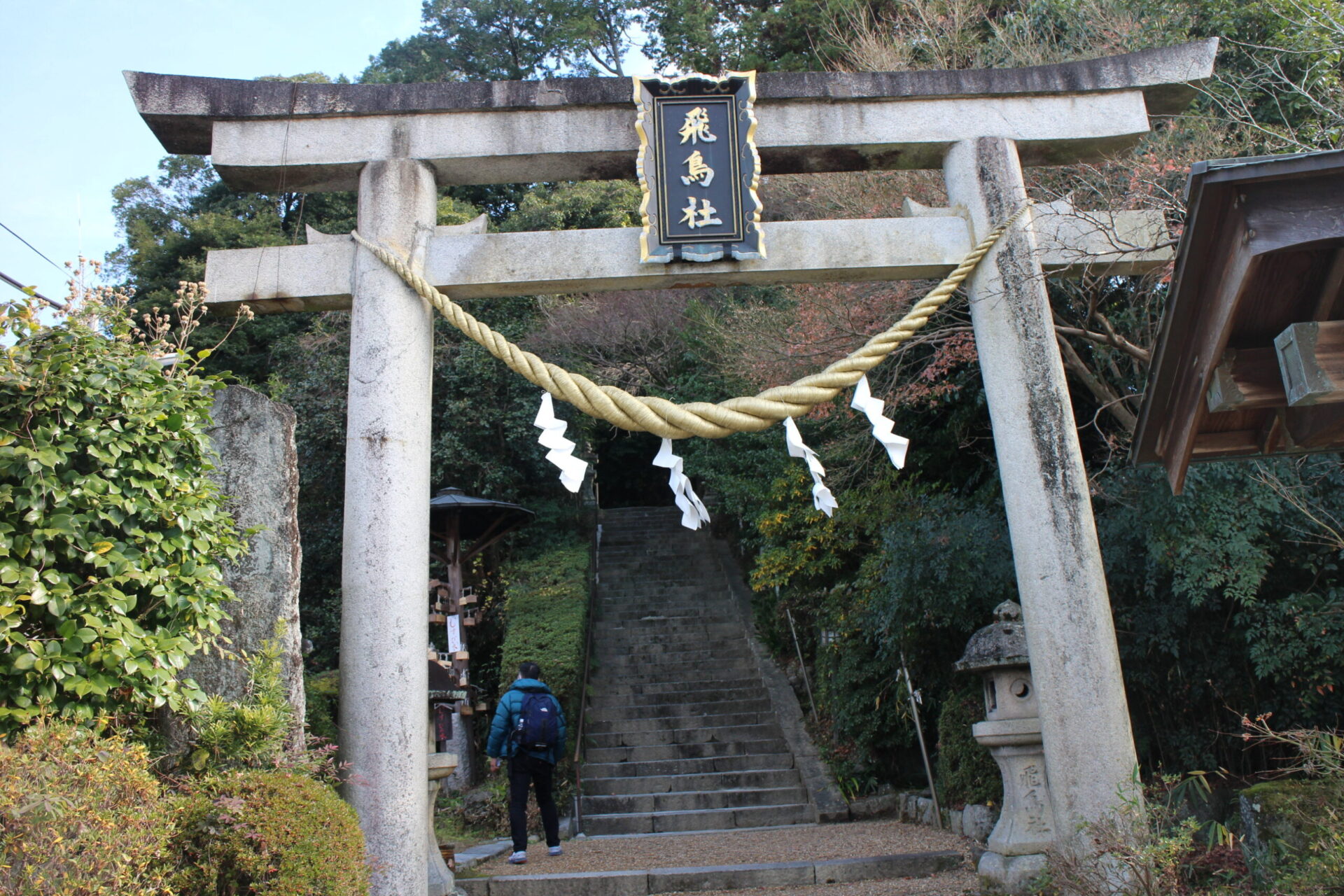
Asukaniimasu jinja
Asukaniimasu jinja is the old shrine transported in 686 to this Torigata mountain.
Deity of bless of children, easy delivery, good marriage and good harvest is worshipped at Asukaniimasu jinja.
Well known by funny love scene between masked Tengu and Otafuku, Onda Festival is held on the first Sunday of Feb, to pray for good harvest and prosperity of descendants.
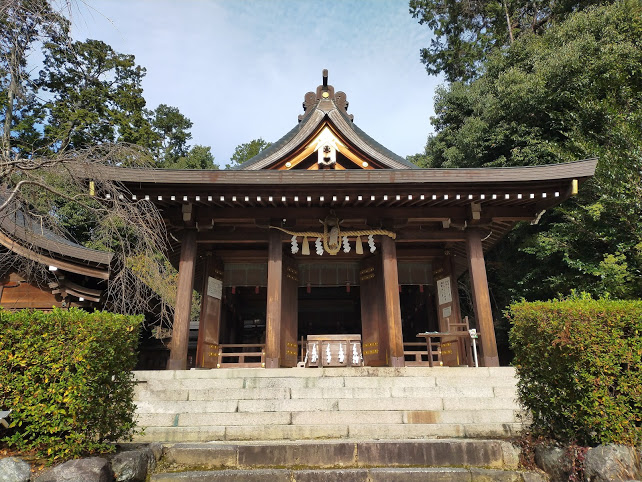
Asukaniimasu jinja
Asuka Temple
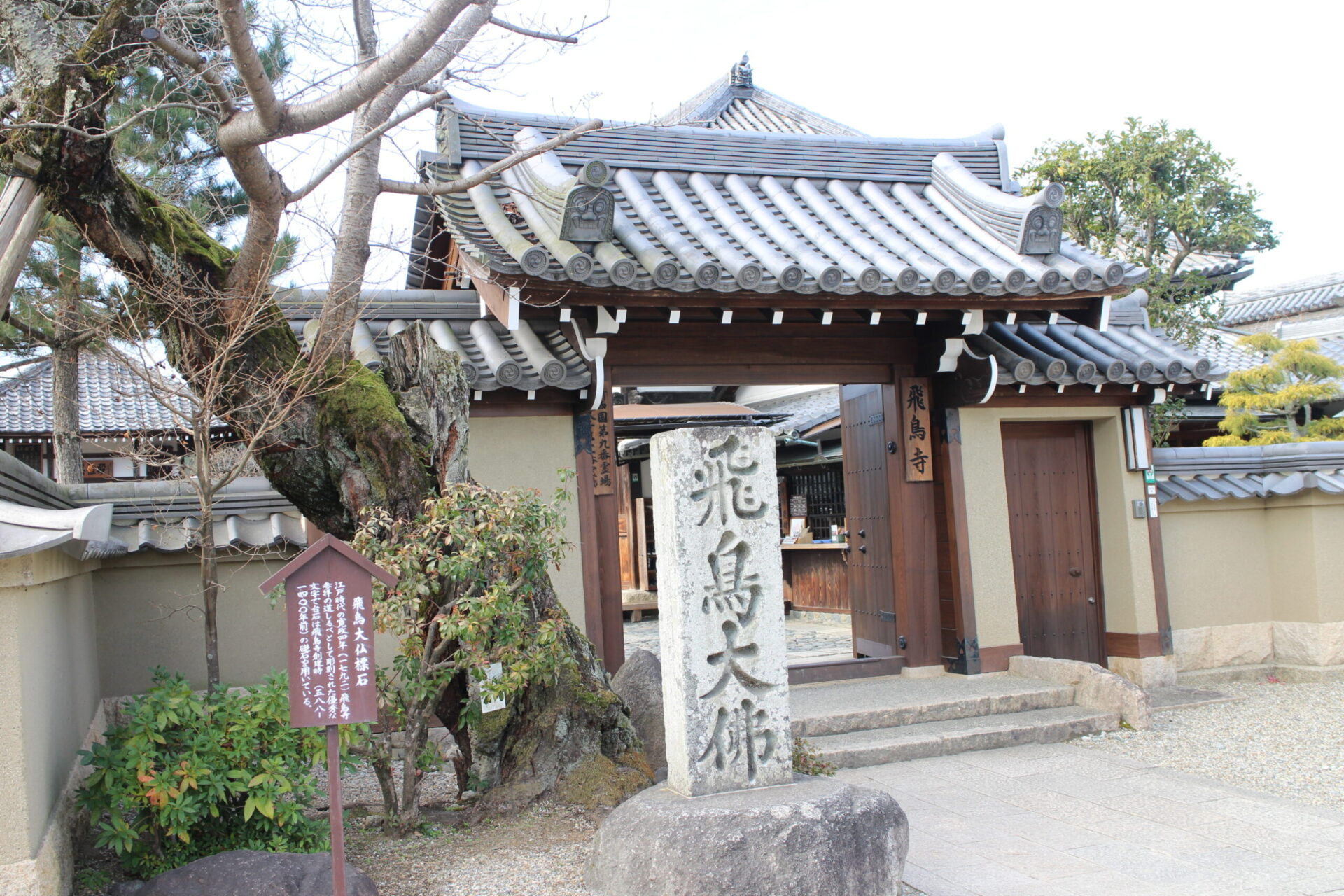
Asuka Temple
Asuka Temple is Japan’s oldest Buddhist temple built in the end of 6c. on the initiative of Soga no Umako, a leader of Soga family.
The recent investigation shows Asuka Temple was the first full-scale temple in Japan having a tower in the center, a Buddha hall each in the north, east, and west, surrounded by the corridor.
The original Asuka Temple was damaged and lost in fires in 887 and 1196, and became ruin.
The present Asuka Temple was rebuilt in 1632.
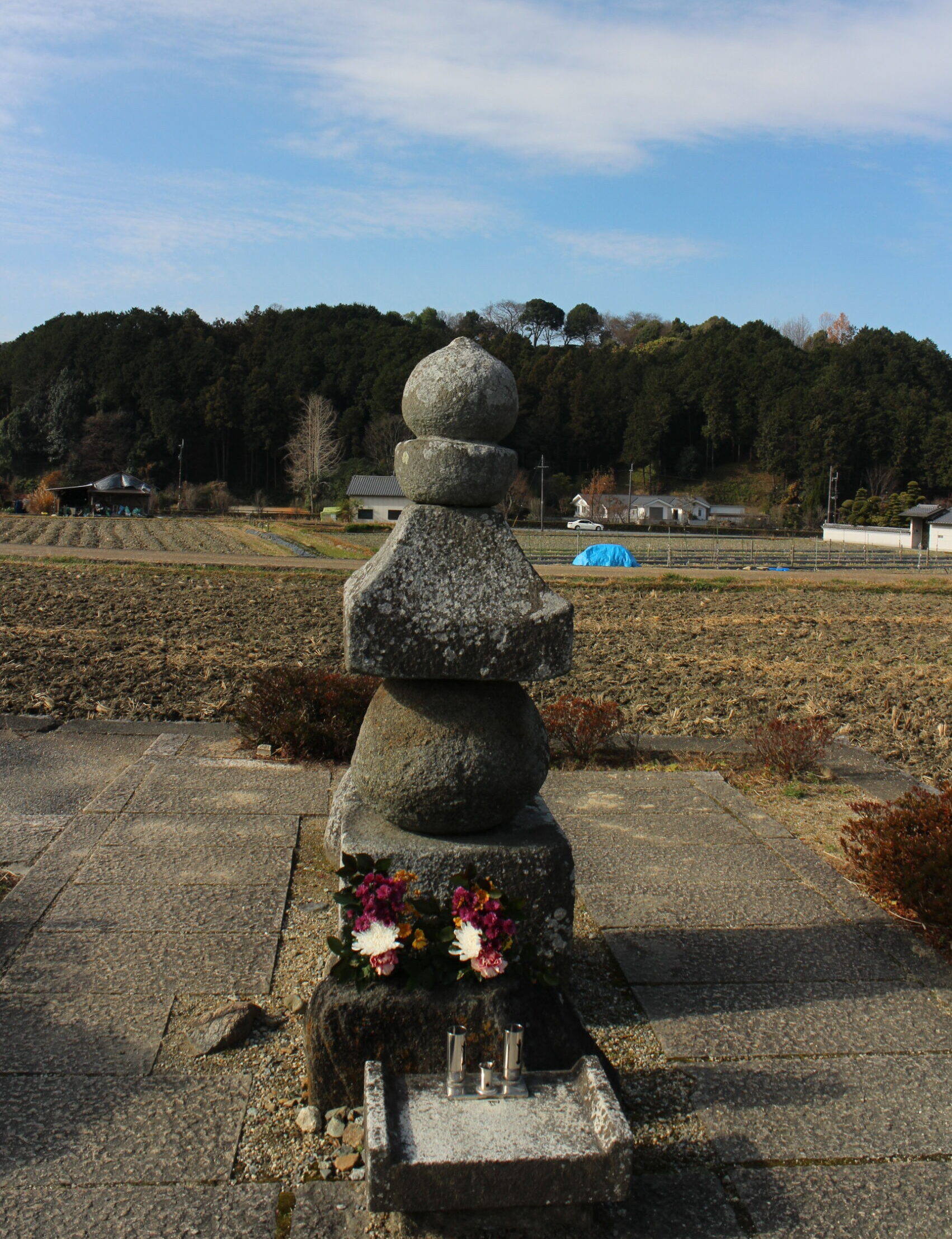
Burial mound for Soga no Iruka’s head
The Asuka Great Buddha
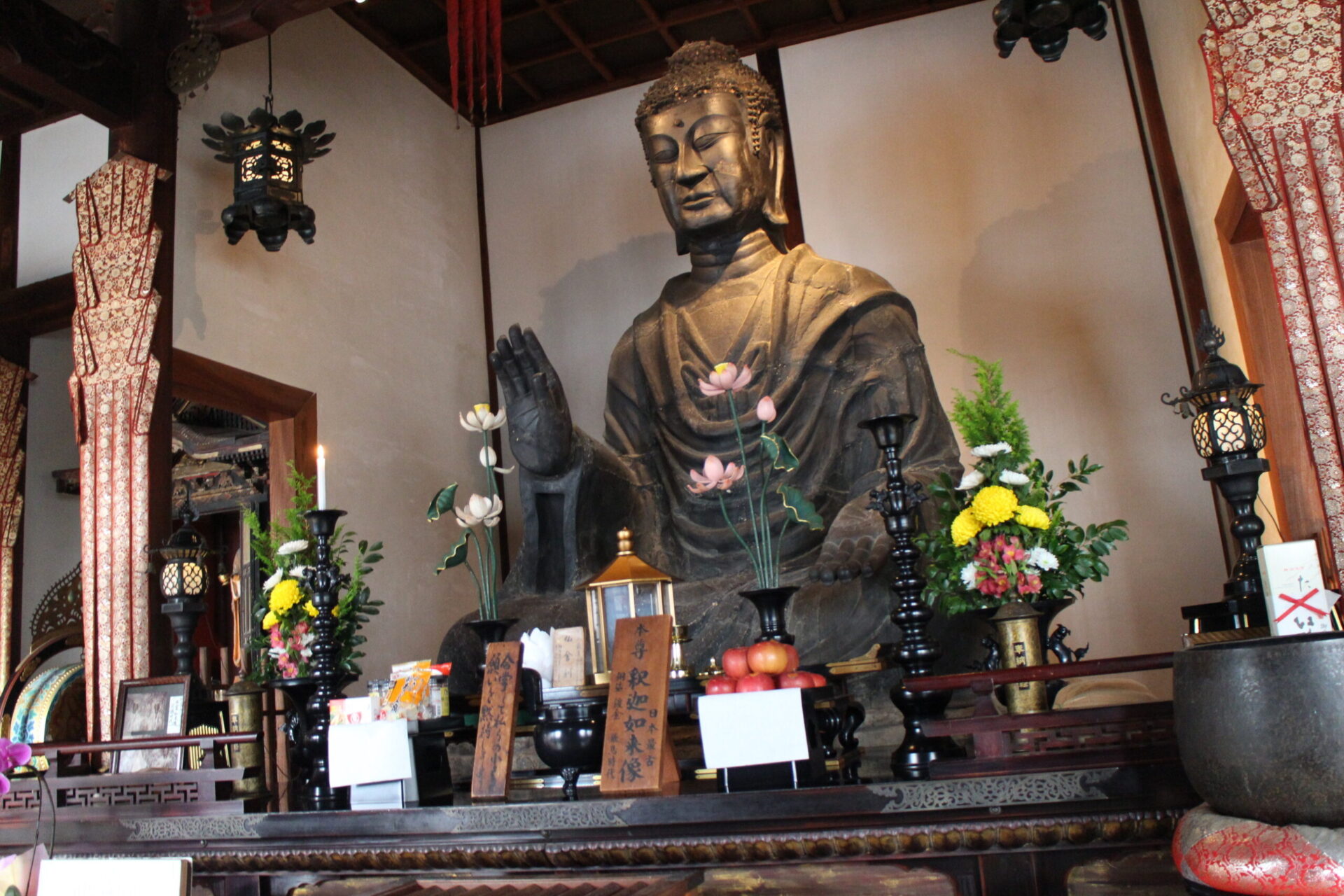
The Asuka Great Buddha
The Asuka Great Buddha is the oldest Buddha statue in Japan, made in 609 by Kuratsukuri no Tori by proposal of Empress Suiko.
Around 3 meters high statue of Asuka Great Buddha was made with 15tons of copper and 30kg of gold.
Damaged from big fire in Heian period and Kamakura period, but Asuka Great Buddha was later rebuilt, and keeps the style of the Asuka sculpture and features of Asuka era in every part even now.
Asuka Temple opens : 9:00am – 5:00pm
Admission fee : 350yen for adults, 250yen for junior high, high school student, 200yen for elementary
Mysterious stones
Tortoise shaped stones
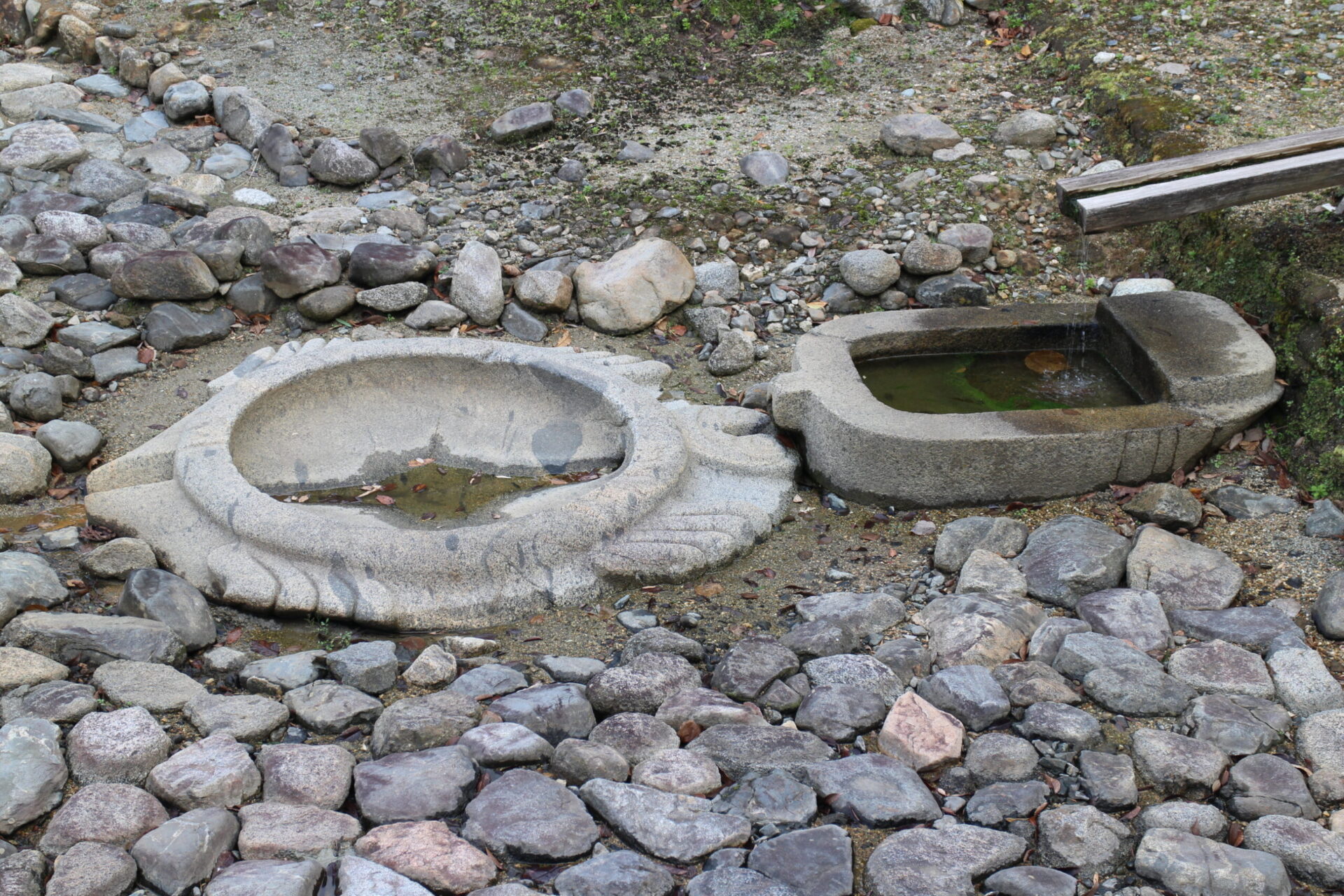
Tortoise shaped stones
Tortoise shaped stones were Accidently found during investigation before building of the nearby Manyo Culture museum, Tortoise shaped stones are unknown about when and what purpose it was made.
But we can imagine a set of stones was used as water storage from the layout, it may be offered for the prominent person since the stone is finely designed in the ancient.
Sakefuna stone
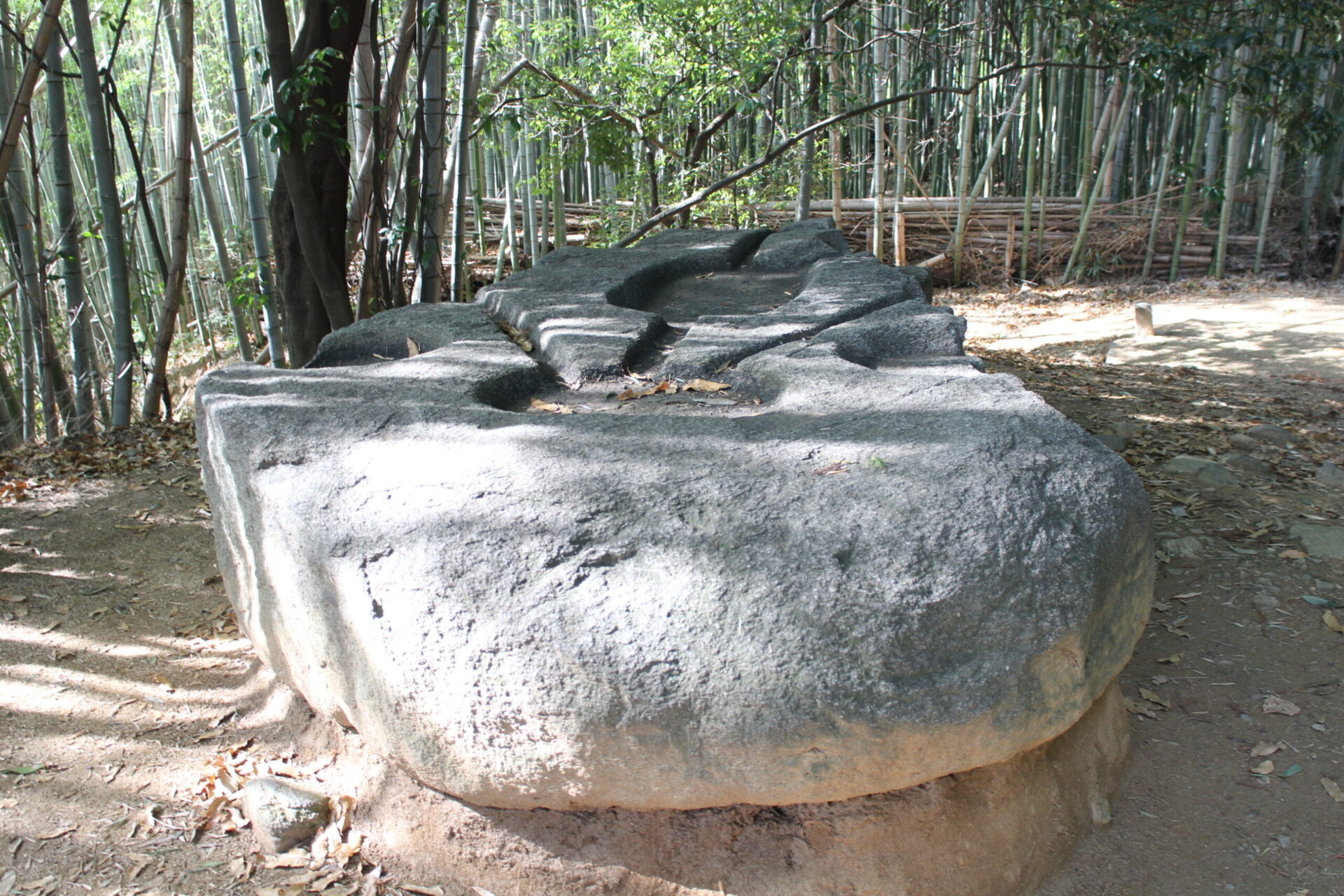
Sakefuna stone
Sakefune stone with length of 5.3m, width of 2.27 and thickness of 1m is oddly designed.
It is said that Sake was made on this stone.
Ishibutai Tumulus
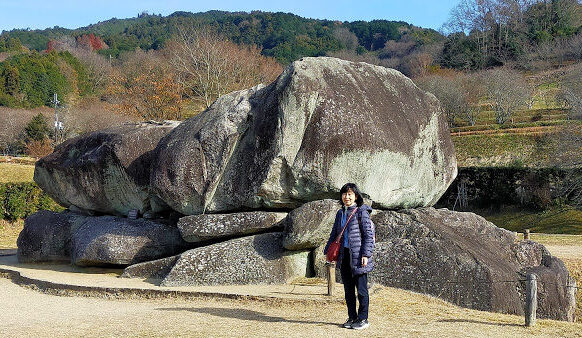
Ishibutai Tumulus
Ishibutai Tumulus was made in early 7th century, estimated to be tombs of prominent Soga no Umako.
The burial chamber is made of 30 gigantic stones.
Walk inside to see marvelous 75ton stone roof.
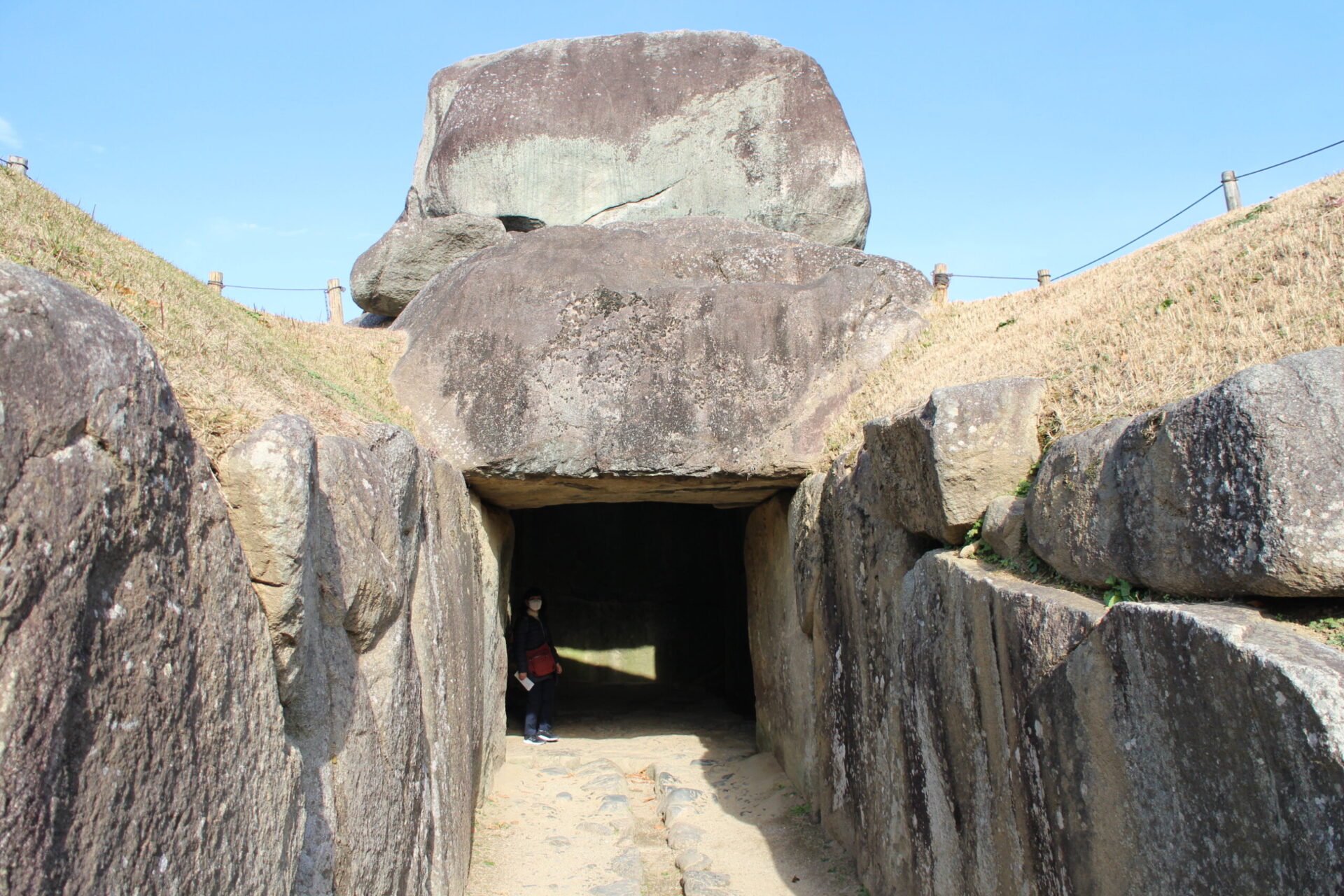
Inside of Ishibutai Tumulus
[wpvr id=”5091″]
Ishibutai Tumulus was made in early 7th century, estimated to be tombs of prominent Soga no Umako.
The burial chamber is made of 30 gigantic stones.
Walk inside to see marvelous 75ton stone roof.
Kameishi Tortoise Stone
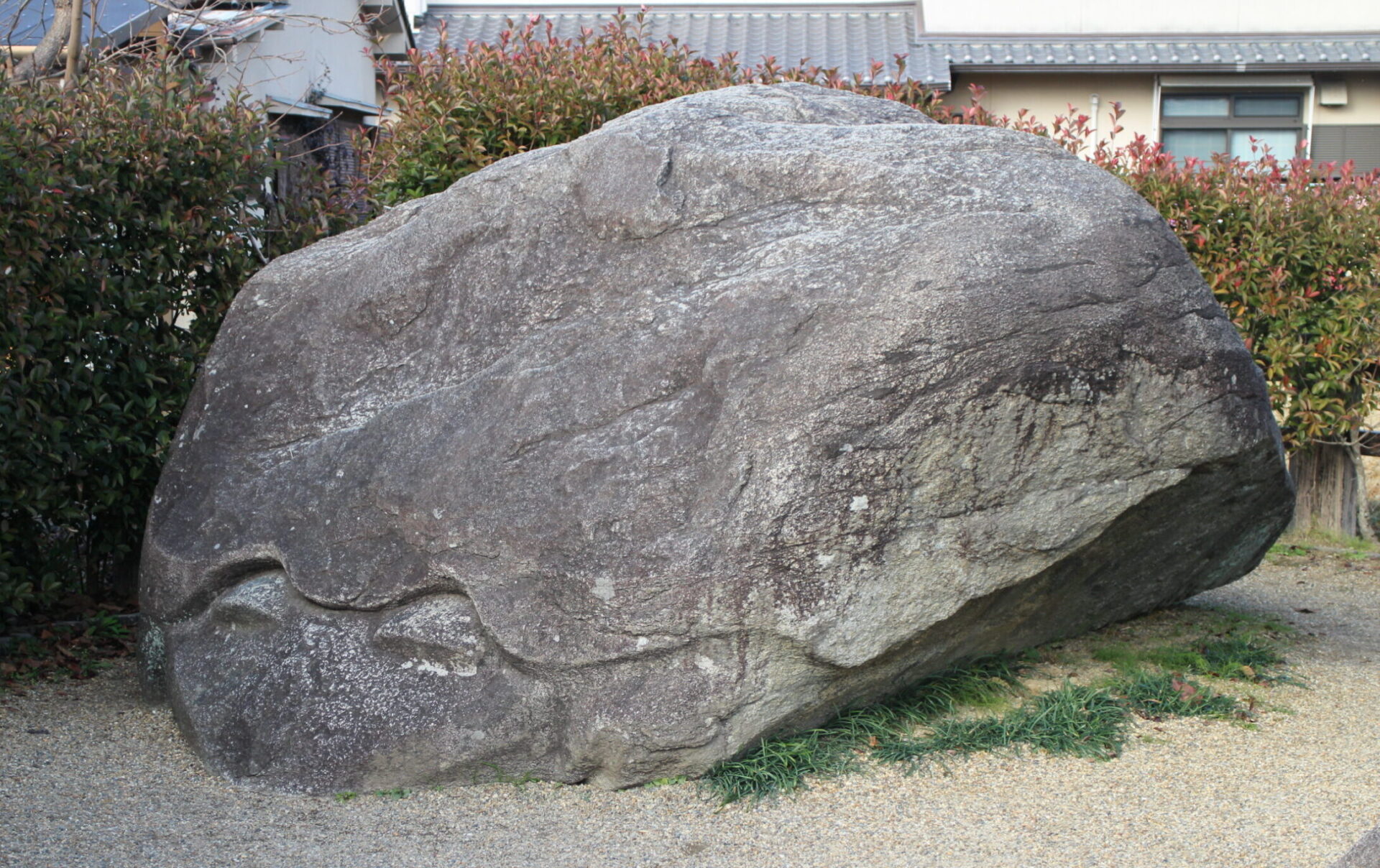
Kameishi Tortoise Stone
A mysterious megalith carved to resemble a turtle.
Well around here if you luckily find a stand run by locals selling oranges don’t hesitate to buy.
Delicious and refreshing!!
Oni no Setchin & Oni no Manaita
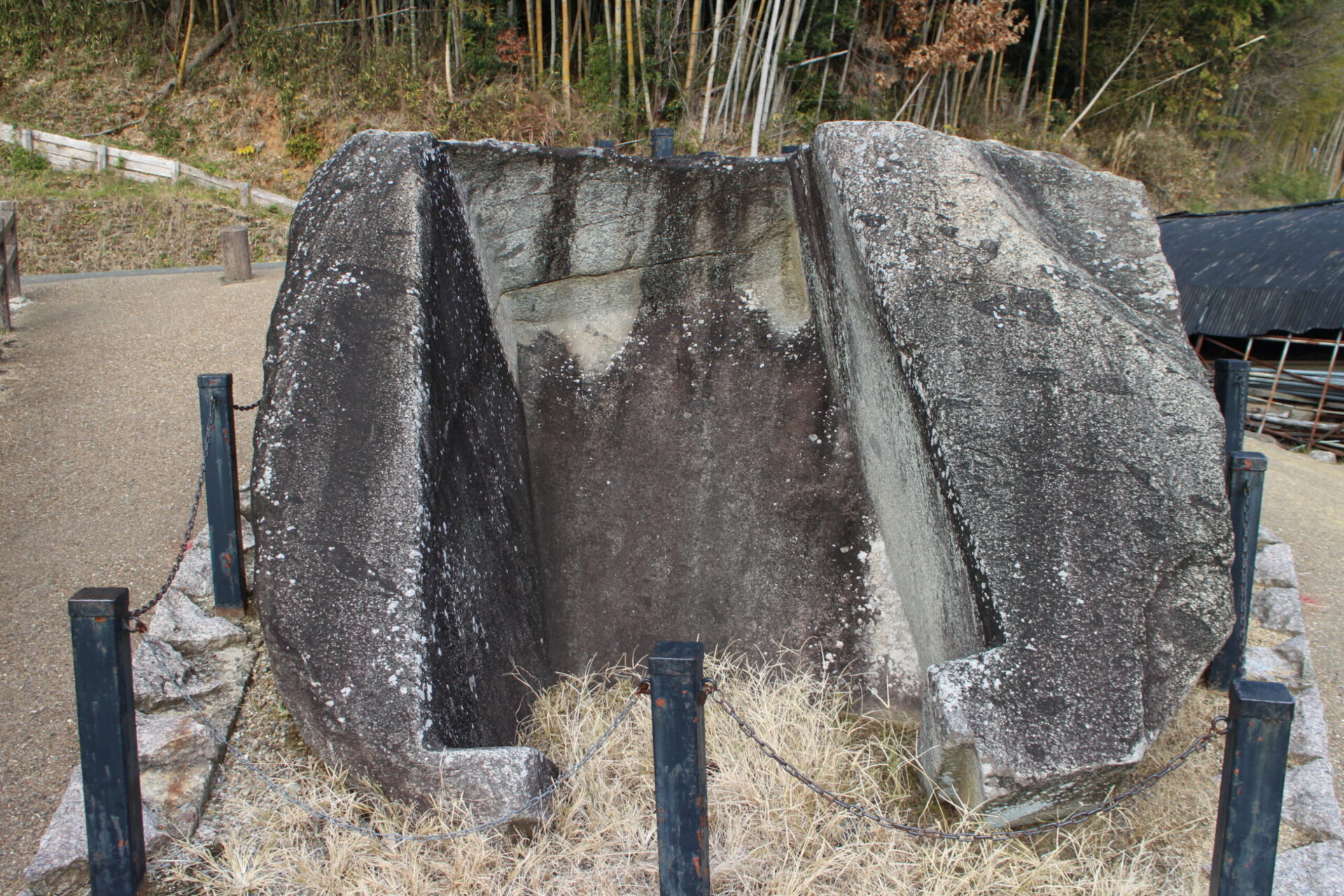
Devil’s toilet
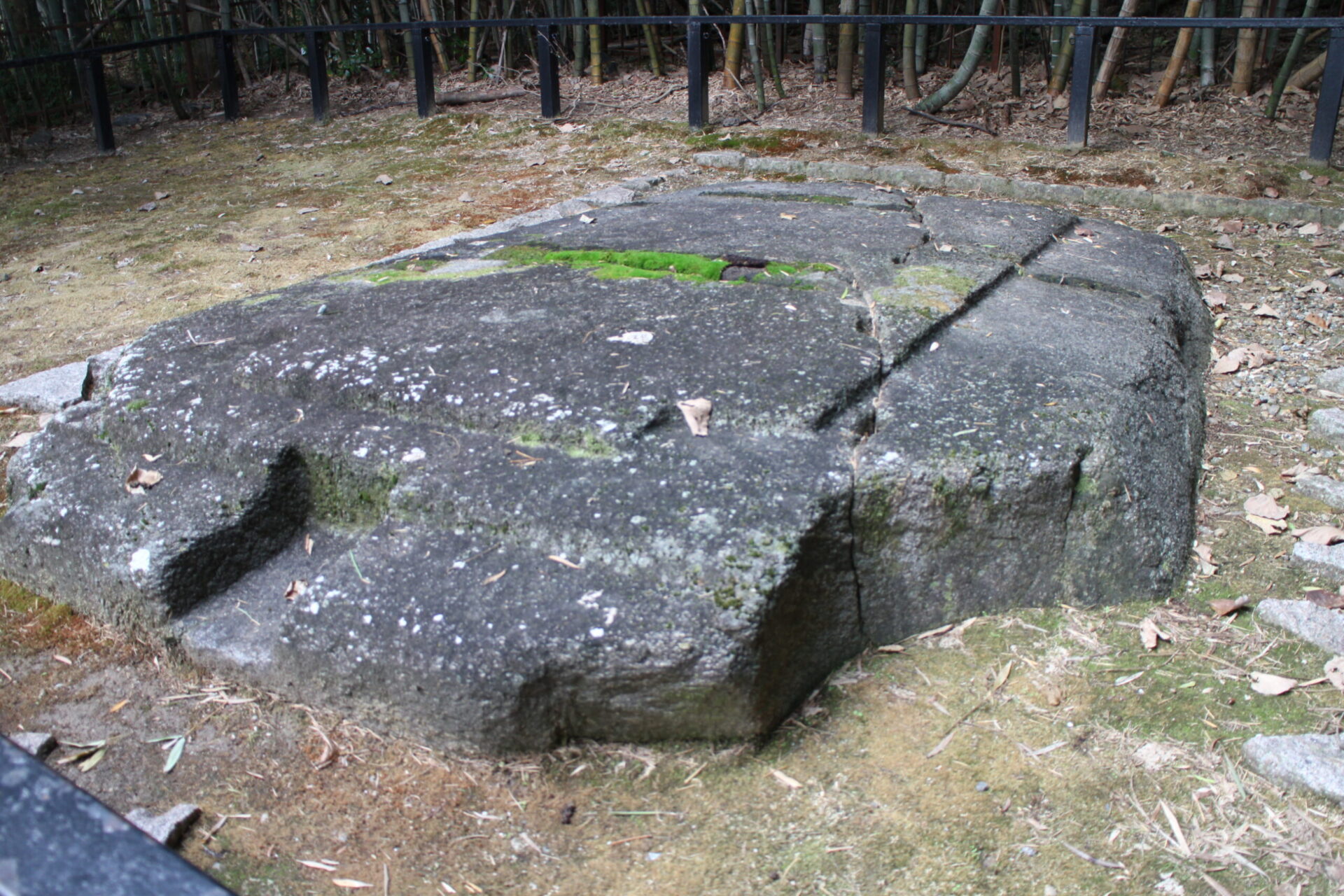
Devil’s chopping board
According to legend, devil baffled and caught travelers in fog, then cook on the chopping board and ate them. Got full and then relieved nature in toilet.
Now they are said to be the bed rock and cover of tomb of Emperor Kinmei in 6th century.
But the reason why they are here is not known.
A local farmer who happened to gather Chinese cabbages there said “Oni no Manaita stone mustn’t have been intentionally placed but must’ve left here as it was too heavy for the locals.
No body knows.
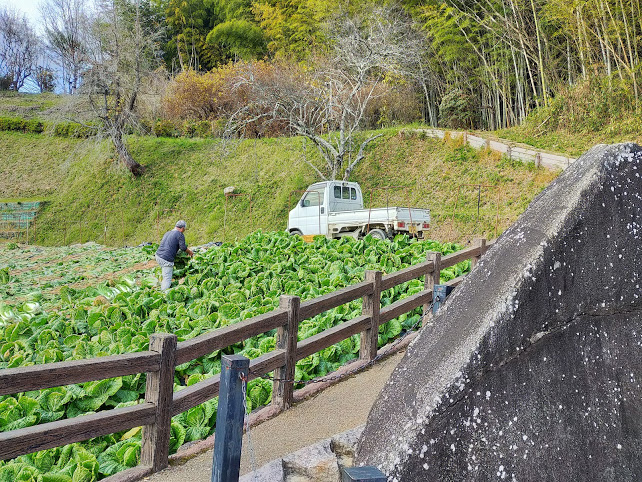
Local farmer harvesting
Tachibana Temple, Prince Shotoku’ s birth place
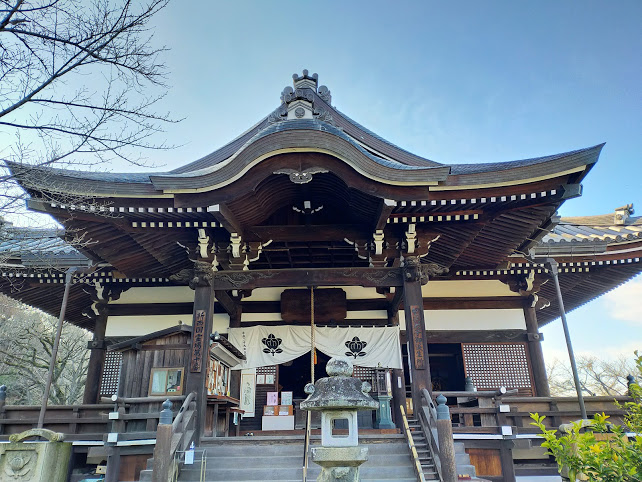
Tachibana Temple
Founded in 606 Tachibana Temple is believed as the birthplace of Prince Shotoku who spread Buddhism in Japan.
Prince Shotoku who served as regent of Princess Suiko established his leadership and sent envoys called kenzuishi to Sui Dynasty of China.
This envoy system continued to the late 9th century, thru it students were sent to tudy in China.
Also known as the creator of Japan’s first constitution with its famous seventeen articles.
His era called Asuka period is associated with the earliest Buddhist culture.
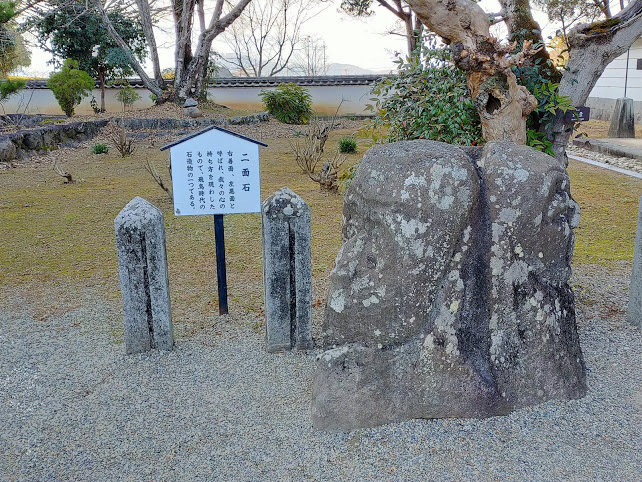
Nimenseki
Mysterious stone, Nimenseki with faces of a man and woman is thought to represent two faces of humanity, good and evil.
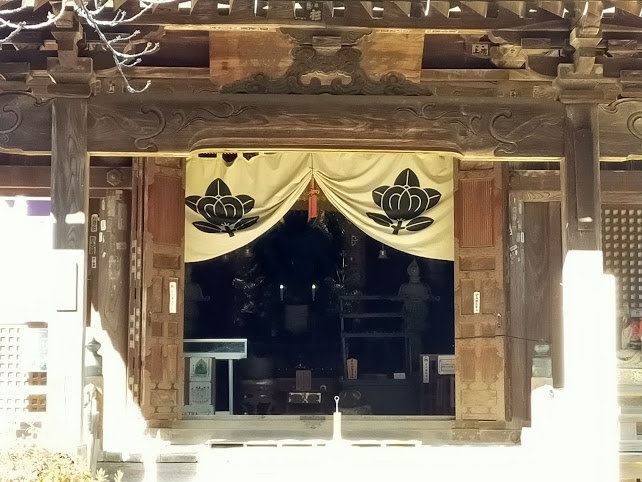
Tachibana Temple
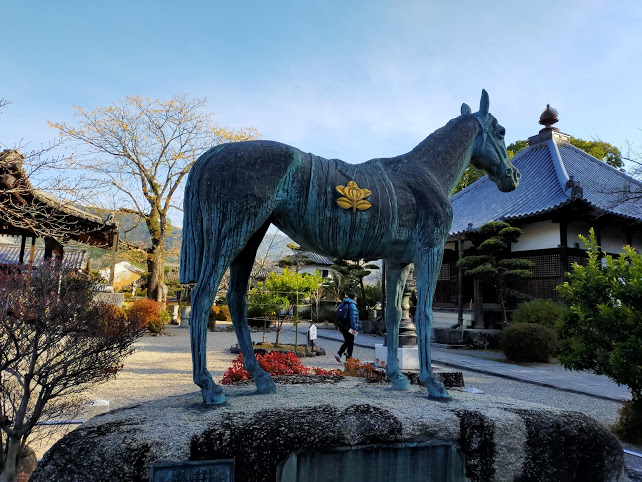
Horse, Tachibana Temple
Takamatsuzuka Tomb
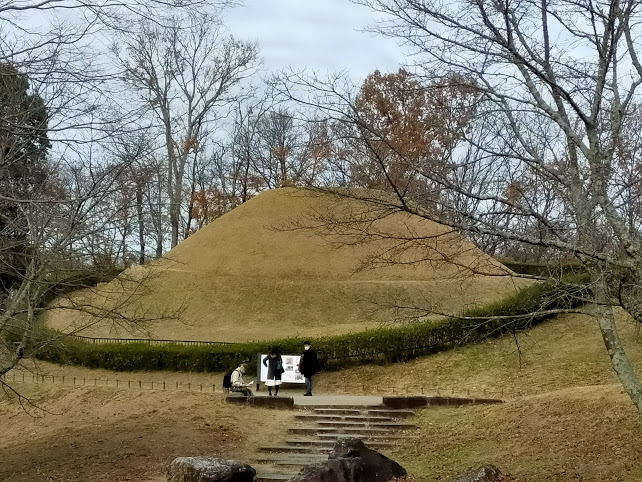
Takamatsuzuka Tomb
Ancient circular Takamatsuzuka Tomb is believed to be built between end of 7th and early 8th century, and was accidentally discovered by local famer in the 1960s.
Made with layers of clay and sand, the mound of the tomb is about 16 meters in diameter and 5 meters high.
For whom Takamatsuzuka Tomb was made is unknown, but the decoration suggest it is for royal family or prominent family.
Inside of the Tomb cannot seen, so visit Takamatsuzuka Mural Museum.
Takamatsuzuka Mural Museum
Exhibited are painted fresco wall paintings of courtiers in full color with red, blue, god and silver foil representing four male followers and four serving maidens together with Dragon, Tortoise, White Tiger and Vermillion Bird group of stars.
The paintings are designated as a National Treasure.
Opens : 9:00am – 4:30pm
Admission fee : 300yen for adults
130yen for students
70 yen for elementary, junior high and other children
URL :http://www.asukabito.or.jp/hekigakan.html
Kitora Tomb
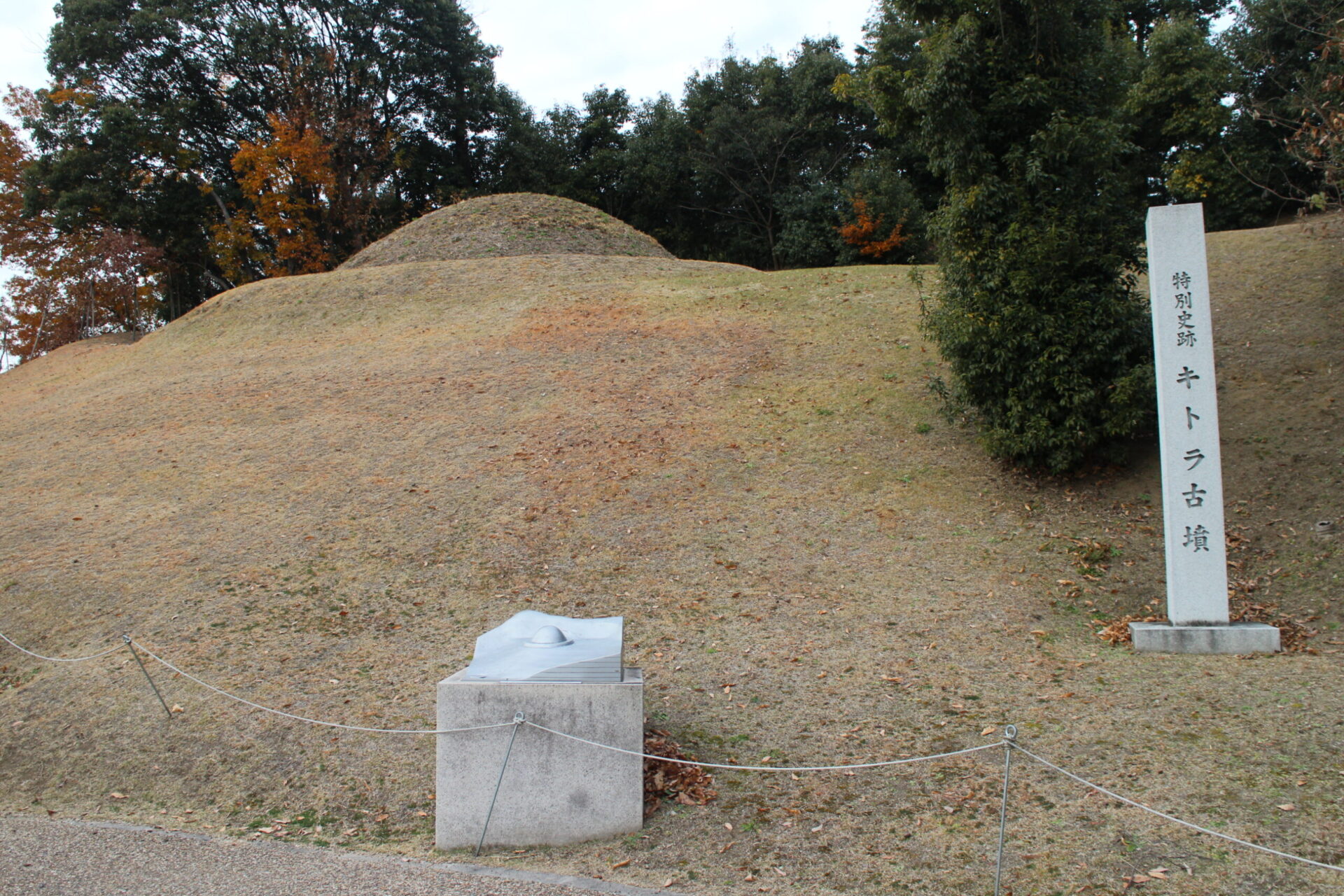
Kitora Tomb
Believed to be built between the 7th century and early 8th century, Kitora Tomb is a small stone chamber with only over 1 meter in height and about 2.4 meters long, large enough to bury a single person.
The four walls are aligned with the cardinal points of the compass, and respectively feature the Black Divine Tortoise of the North, the Azure Dragon of the east, the Red Phoenix of the South, and the White Dragon of the west.
On the ceiling there is an astronomical chart. In addition the 12 zodiac animals headed figures with human body are painted on the wall, which is thought to be the oldest zodiac murals in East Asia.
Based on analysis of the bone fragments and items remained in the tomb, interred is believed to be a middle aged or older aristocratic male.
Kitora Tumulus Mural Experiential Museum Shijin-no-yakata
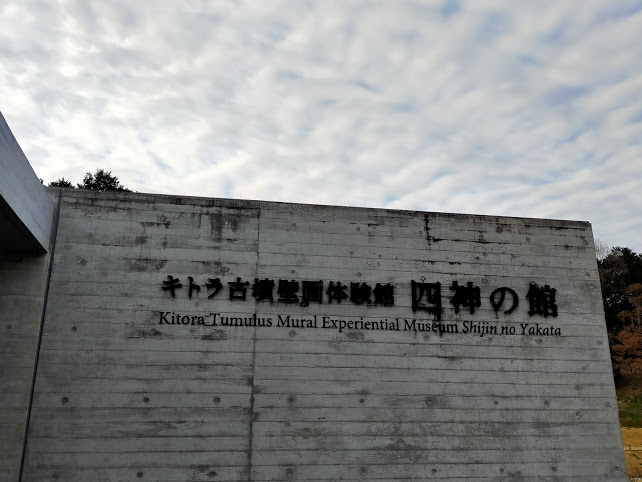
Kitora Tumulus Mural Experiential Museum Shijin-no-yakata
Exhibited are Kitora Tumulus mural paintings and artifacts.
The visitors can view the paintings while they remain securely in the preservation room. The exhibit room also displays burial goods discovered in the Kitora tumulus during the excavations (the mural paintings are available for viewing on a limited basis).
URL : https://www.nabunken.go.jp/shijin/en/
9:30am – 5:00pm (March – November)
9:30am – 4:30pm (December – February)
*Paintings are available for viewing on a limited basis
* Last admission 30 minutes before closing
*No exhibition of paintings on Wednesdays
(open on Wednesday holidays; closed on following weekday)
* Exhibit closed at beginning and end of year
Admission fee: Free
How to get to Asuka
At Kintetsu Nara st., Take Kintetsu Nara Line to Yamato saidai ji, then transfer to Kintetsu Kashihra Line to Kashihara jigu mae st.
If you go to Asuka sta., further take Kintetsu Yoshino line to Asuka St.
One way : 590yen (around 1hour)

